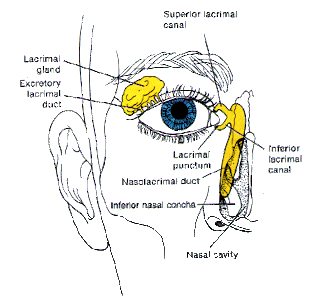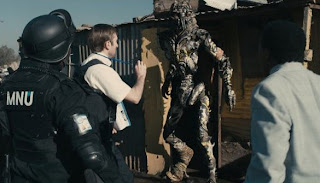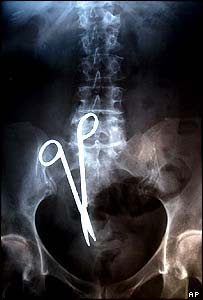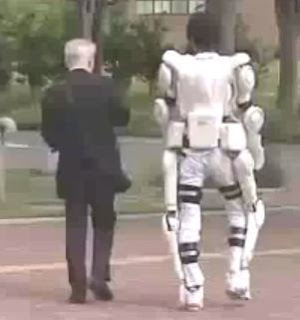Sherlock Holmes (Robert Downey Jr.) is a brilliant sleuth but a lousy anatomist. At the very beginning of this delightful film(1), Holmes narrates a sequence of strikes he is about to execute on an adversary, predicting the physiological results from the various blows he will inflict.
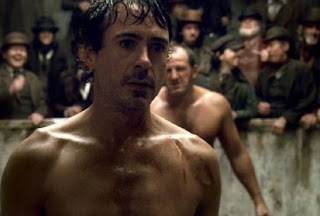
Mr. Downey as Sherlock Holmes.
Get me some barbeque sauce for those ribs(2)!
What is this big faux pas in the context of this narrative? The statement that took me a full three minutes to recover from? Holmes says he's going to punch this guy in his floating ribs, and poke them into his liver. Argh! See what I mean? This is so elementary, my dear Holmes! There are no floating ribs over the upper right quadrant of the abdomen. False ribs, yes. Floating ribs, no. Sheesh!

The liver is the big red blob in the upper right quadrant of the abdomen.
It is nestled up under your diaphragm(3). Some livers make excellent pate.
Everyone has twelve pairs of ribs. True ribs are pairs 1-7. They attach directly to the sternum, in the front of the body. False ribs (rib pairs 8-12) do not articulate directly with the sternum. Ribs 8-10 indirectly attach to the sternum. Floating ribs are pairs 11 and 12. They are called "floating" because they only attach to the thoracic vertebrae and don't make it around to the front of your torso to attach onto the sternum. Do they really float? No. They are anchored by bands of muscle. The tip of rib 11 can often be felt at the side of the waist. Rib 12 is in the back, hovering over your kidneys(4). Floating ribs are always false, but not all false ribs float.

True ribs, false ribs, and floating ribs, grouped above.
If you punch a kidney, you punch floating ribs. You could punch the liver without hitting a rib at all, but you are most likely to hit false ribs 8-10, or rib 7, a true rib(5).
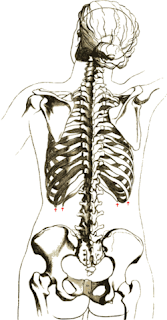
Posterior view of the skeleton.
The floating ribs have the little red arrows pointing to them.
Holmes' lack of anatomical acumen doesn't keep him from incapacitating his enemies with his bare hands. I am not pooh-poohing his prowess in the manly arts, just his medical training. Great movie! Now I am hungry for skirt steak, BBQ ribs, and pate. All washed down with a pint of ale!

1. Yes, delightful. Jude Law and Robert Downey Jr., plus an allusion to resurrectionists and the dissection of criminals after their execution (which would have been a part of English culture even though the Anatomy Act of 1832 opened the non-criminal cadaver door, so to speak) plus fights, plus an evil villain looking (Mark Strong) oh-so-very Jeremy Britt truly makes for one fun movie!
2. I have a very loving and tolerant vegetarian husband.
3. The diaphragm is skirt steak in meat cut vocabulary.
4. Okay, the 11th rib also has some kidney coverage, too.
5. Don't get me started on true ribs.




